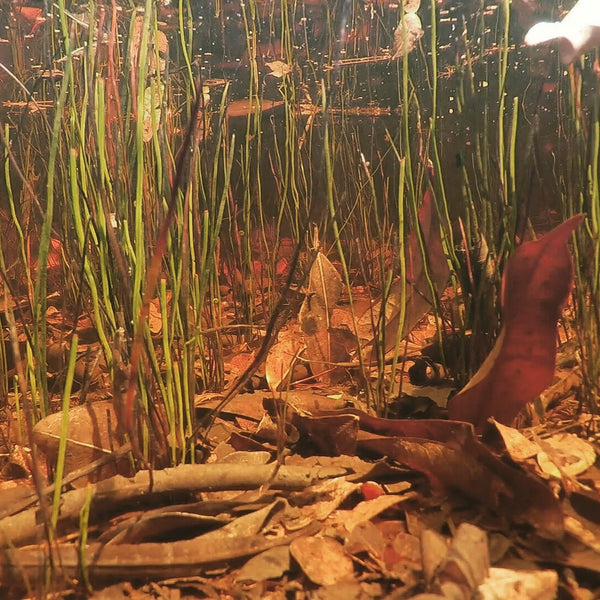- Continue Shopping
- Your Cart is Empty
"Reasonable facsimiles?"
One of the latest obsessions I have with flooded Amazonian forest floors is to find out the plants which are commonly found there and survive and even grow during the period of inundation.
One of my goals is to find either the seeds or some sprouting versions of some of these plants. It's not easy, although I might of found a few sources for seeds of one of the fruit-bearing plants of the region, Jaboticaba, Myrciaria sp.
In one study I found about the plants which grow in the inundated igapo habitats, the most common species are Eugenia inundata, Sphinctanthus stmflorus and Securidaca longifoliaare. These are found most frequently in the water during the inundation.

Now, obviously, many of these plants are (in no particular order) too large, too slow to grow, and too damn hard to find... It might be a matter of finding substitutes of plants which function as "reasonable facsimiles" in both form and adaptability.
Sure, we've all played with Philodendron and such, which root in water without substrate, and many hobbyists incorporate them into their aquariums.
Cool, but not really I'm looking for. I'm trying to get terrestrial plants growing out of the soil, partially submerged, as opposed to a plant simply "rooting" in water.
Make sense?
See the palm in the igapo pic by Mike Tuccinardi above? I don't know the species. However, I have sort of similar-appearing potted "Cat Palm", Chamaeodorea cataractarum in our home, which I've taken cuttings from at various time for this type of experimentation. It's from Mexico, and never is found as far south as Brazil, but it kinda looks the part!
A reasonable facsimile, IMHO.
It throws of little plants now and again, and seems to have even rooted in water without substrate in tests I've done. Most palms don't typically root in water- they need substrate, so this was truly an anomaly. Oh, and they don't "root" from "cuttings"- you need to actually utilize either a small specimen that already has established some roots.
So, of course, I had to include the little "water-rooted" cutting that I had going in one of my recent experiments tanks...Let's see if it survives, let alone grows! So far so good at about 4 and a half weeks...

The other plants, along with some grasses which have North American analogs, are fascinating, and are ones I'll have to source at some point. Grasses are really something I've been playing with a lot lately; I've been experimenting with a bunch of different types to replicate the flooded forests I obsess over...
My "Urban Igapo" experiments have yielded a lot of good data on sporting grasses, and I think these are going to be a lot of fun to play with in the future!

It will be fun to try some different plants to see what gives me the look and function I'm trying to achieve! I think one of the first issues will be to simply provide a deeper substrate!
I am a huge fan of Acorus to simulate many of the heavier-bodied grasses in these habitats; there are numerous other candidates to play with, too.

We'll be continuing to document the evolution of these simple, yet remarkably engaging experiments. Many of you who are into aquatic and houseplants have the real upper hand on the knowledge of this stuff, and can "lead the charge" to create amazing shallow "fusion" tanks. I've seen a few amazing examples already from around the world!

The idea of utilizing plants and grasses that are "reasonable facsimiles" to those found in the habitats we love so much is very exciting starting point towards creating unique aquariums which look and function like their wild counterparts in many ways!
My fondest wish is that we as a community continue to try some similar experiments, which will make a huge impact on the body of collective knowledge in our speciality as we enter 2021!
Stay excited. Stay engaged. Stay bold. Stay creative. Stay engaged...
And Stay Wet.
Scott Fellman
Tannin Aquatics









Scott Fellman
Author